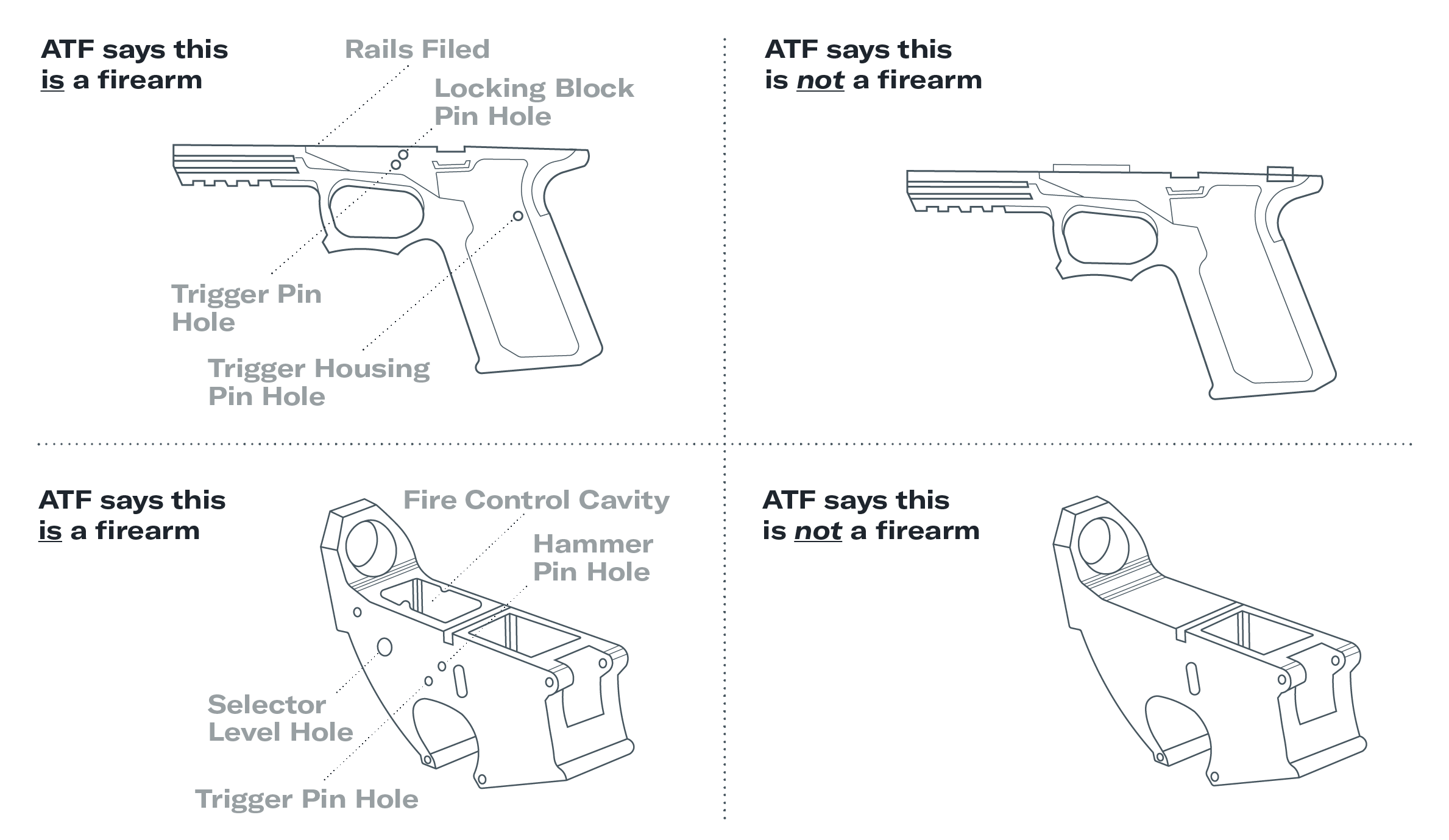On February 15, a group of five Democratic senators sent a letter to YouTube’s CEO, Susan Wojcicki, urging her to step up the site’s efforts to ban videos that instruct viewers on methods for producing so-called “ghost guns.” The group included both senators representing Connecticut (Richard Blumenthal and Chris Murphy), New Jersey (Corey Booker and Robert Melendez), and Ed Markey of Massachusetts. Followers of 3D printing news have, of course, long been familiar with the controversy surrounding ghost guns, which are untraceable firearms––including 3D printed guns––that can be bought online or built at home.

A couple of weeks before the senators’ letter-writing, President Biden emphasized that the federal government would continue to increase its attempts to regulate ghost guns while speaking alongside NYC mayor Eric Adams at an event hosted by the New York Police Department (NYPD). Touting a plan the administration is calling the “National Ghost Gun Enforcement Initiative,” the president said: “If you commit a crime with a ghost gun, not only are state and local prosecutors going to come after you but expect federal charges and federal prosecution as well.”
Aside from threatening more severe sentencing for those convicted of crimes involving ghost guns, the U.S. Department of Justice’s initiative also includes language that would create a “ghost-gun coordinator” position for every field division of the U.S. Bureau of Alcohol, Tobacco, and Firearms (ATF). According to an article published in Forbes the day after Biden’s joint event with Mayor Adams, Christian Heyne, the vice president of the nonprofit gun-control group Brady United, said the Biden Administration’s plan would train a “cadre of prosecutors on enforcement issues, specifically around the use of ghost guns and crimes.” In the same article, the self-described inventor of the 3D printed ghost gun Cody Wilson was described as “unfazed” by the president’s proposals and rhetoric: referring to his sale of “50 to 55 [ghost guns] a week”, Wilson said he “expect[s] that to keep going.”

Wilson is an annoying, self-aggrandizing charlatan, but he seems fitting to be unworried by the federal government’s latest claims that it’s serious about finally doing something about gun control. Additionally, it’s hard to disagree that even with someone as unlikable as Wilson, the government has any leg to stand on in terms of expressing moral outrage against gun violence. It shouldn’t be surprising, but it’s nevertheless worth pointing out that in 2008, while campaigning for Barack Obama, Joe Biden drummed up his credentials to “the center” by saying, “I guarantee you, Barack Obama ain’t taking my shotguns, so don’t buy that malarkey…I got two; if he tries to fool with my Beretta, he’s got a problem.”
Aside from this typical microaggression against candor, there’s a much larger issue that it’s impossible to take seriously moral outrage against industrialized violence when the source is the U.S. federal government. It’s particularly ironic in this case, for instance, that, thanks mainly to the U.S. government, the trajectory of the 3D printing field is to become evermore-increasingly a part of the military-industrial complex. Demanding YouTube ban instructional videos — or rather, to start enforcing bans that YouTube has had on the books for several years now—is more of this same type of hollow, feeble attempt to act like something is being done.
Vows to “ban the internet” never work and make the individuals who make such vows look silly and out of touch with how the internet works. People shouldn’t be blamed, then, for assuming the government’s agenda is more about protecting the government and corporate America’s monopoly on violence than it is about protecting people from the admittedly real and senseless damage Americans do to each other with guns. This isn’t to say that the government shouldn’t regulate firearm sales. It’s simply to say that starting another campaign that’s doomed to fail, like the one against ghost guns, will probably make it even harder for the government to succeed at gun control eventually.
Subscribe to Our Email Newsletter
Stay up-to-date on all the latest news from the 3D printing industry and receive information and offers from third party vendors.
You May Also Like
3D Printing Unpeeled: Wind Turbines, Probiotics and Lenses
TPI Composites, ORNL and Ingersoll Rand are working to make wind turbine tooling segments that can be 18.3 meters long. These elements also include resistive wires that help keep the...
3D Printing Unpeeled: Digital FDM Filament for Functional Gradients
Just published in Nature, a paper by a Seoul National University team looks at “3D printing with a 3D printed digital material filament for programming functional gradients.” Sang-Joon Ahn, Howon...
3D Printing Unpeeled: $5000 Cold Spray 3D Printer, Roland DGA & Living Materials
The AeroForge is a $5000 cold spray metal printer for copper made by a student team at Rice University. In a paper for ACS Central Science a team from Nanjing...
3D Printing Webinar and Event Roundup: April 28, 2024
In this week’s 3D Printing Webinar and Event Roundup, the Ceramics Expo is taking place in Michigan, Stratasys continues its advanced training courses, and SPE is holding a Polymer Characterization...































